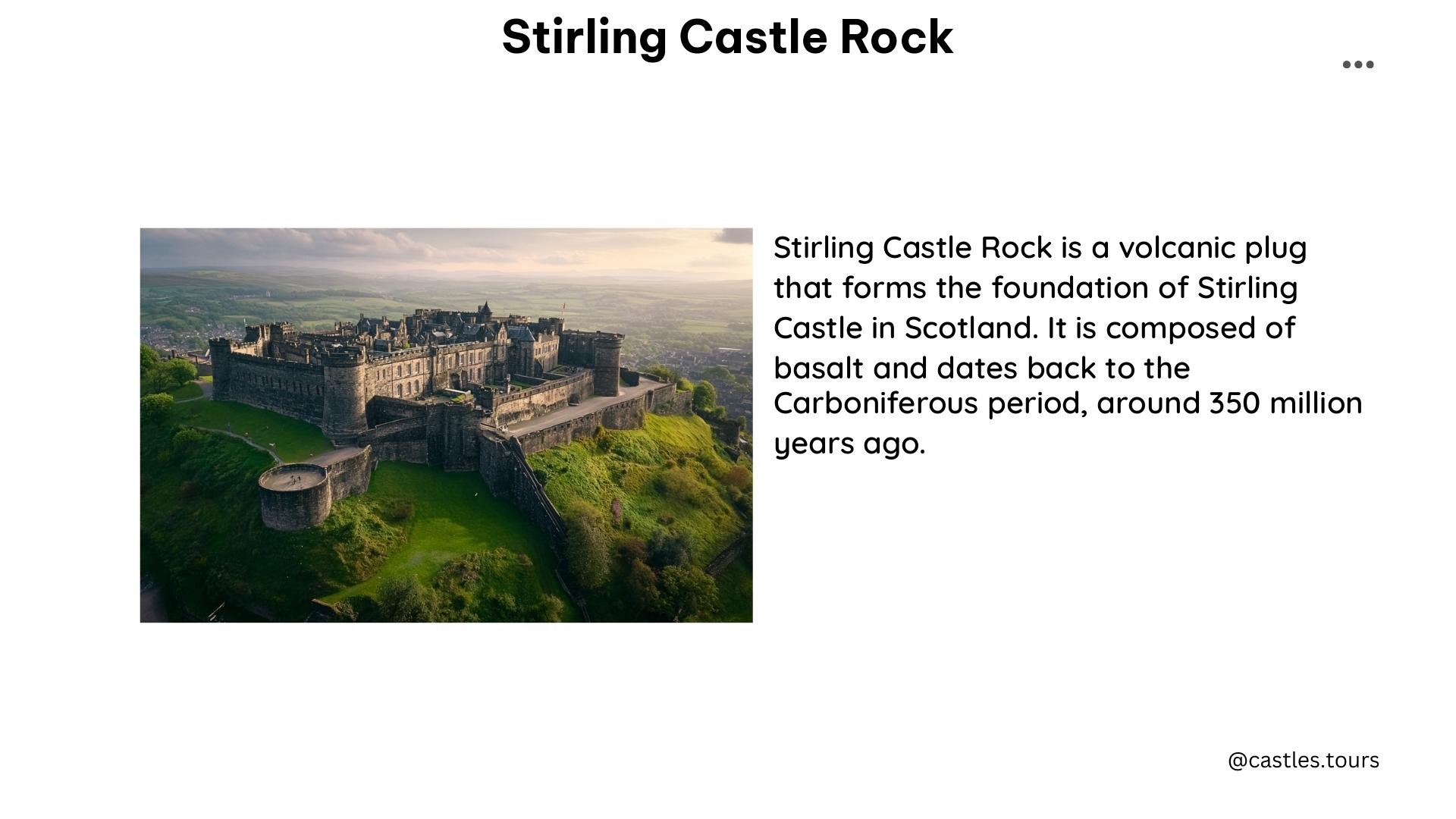Stirling Castle, perched atop an intrusive crag, is a testament to the strategic importance of its volcanic rock foundation. This iconic Scottish castle, with its rich history and architectural grandeur, has long captivated the imagination of visitors and historians alike. In this blog post, we’ll delve into the significance of the Stirling Castle rock, its defensive advantages, and the historical events that have unfolded on this remarkable geological formation.
The Volcanic Rock Outcrop: A Natural Fortress

Stirling Castle’s location atop a volcanic rock outcrop is no accident. The Stirling Sill, a geological formation composed of intrusive igneous rock, provides a natural defensive advantage to the castle. This volcanic rock crag rises steeply on three sides, creating a formidable barrier that has deterred countless would-be invaders over the centuries.
Defensive Advantages of the Volcanic Rock
- Steep Cliffs: The volcanic rock foundation of Stirling Castle is characterized by steep cliffs, making it challenging for attackers to approach the castle from multiple directions.
- Natural Fortification: The natural elevation and rugged terrain of the volcanic rock outcrop have served as a natural fortification, enhancing the castle’s defensive capabilities.
- Commanding Views: The elevated position of the castle, perched atop the volcanic rock, offers commanding views of the surrounding landscape, allowing the defenders to monitor and respond to potential threats.
Strategic Importance: Guarding the River Forth Crossing

The location of Stirling Castle, guarding the lowest crossing point of the River Forth, has been a crucial factor in its strategic importance throughout history. The river crossing was a vital passage for centuries, making Stirling Castle a key stronghold in the region.
The Significance of the River Forth Crossing
- Transportation Hub: The River Forth crossing was a crucial transportation route, connecting the northern and southern regions of Scotland, making Stirling Castle a strategic location for controlling this vital passage.
- Military Significance: The castle’s position at the River Forth crossing made it a valuable military asset, as it allowed the defenders to monitor and control the movement of troops and supplies across the river.
- Economic Importance: The river crossing was also an important economic hub, with trade and commerce passing through the area, further enhancing the strategic value of Stirling Castle.
Historical Significance: Battles and Sieges
The volcanic rock foundation of Stirling Castle has witnessed numerous battles and sieges throughout its history, reflecting its strategic importance in the region.
The Wars of Independence
During the Wars of Independence between Scotland and England, Stirling Castle played a pivotal role. The castle was a key battleground, with the famous Battle of Stirling Bridge in 1297 and the Battle of Bannockburn in 1314 taking place in the surrounding area.
Royal Residence and Military Base
Stirling Castle has also served as a preferred residence for many Scottish monarchs, including Mary Queen of Scots, who was crowned there in 1543. Additionally, the castle’s strategic location made it an important military base, with various sieges and battles taking place over the centuries, including the Jacobite Rising of 1745-1746.
Visiting Stirling Castle Rock
Stirling Castle is a must-visit destination for anyone interested in Scottish history and architecture. Visitors can explore the castle’s impressive interiors, admire the stunning views from the volcanic rock foundation, and learn about the castle’s rich past.
Visitor Information
- Opening Hours: Stirling Castle is open year-round, with varying hours depending on the season.
- Ticket Prices: Ticket prices range from £16.00 to £19.50 for adults, with concessions and children’s tickets available at a lower cost.
- Guided Tours: Guided tours, including audio guides and digital British Sign Language tours, are available for visitors.
Conclusion
Stirling Castle’s volcanic rock foundation has played a pivotal role in its history, providing a natural defensive advantage and strategic importance that have shaped the course of Scottish history. From the Wars of Independence to the castle’s role as a royal residence and military base, the Stirling Castle rock has witnessed countless significant events. Today, visitors can explore this remarkable geological formation and immerse themselves in the rich history of this iconic Scottish fortress.
References
- Historic Environment Scotland. (n.d.). Stirling Castle. Retrieved from https://www.historicenvironment.scot/visit-a-place/places/stirling-castle/
- Wikipedia. (2024). Stirling Castle. Retrieved from https://en.wikipedia.org/wiki/Stirling_Castle
- Historic Environment Scotland. (n.d.). Stirling Castle: History. Retrieved from https://www.historicenvironment.scot/visit-a-place/places/stirling-castle/history/
- World History Encyclopedia. (2021). Stirling Castle. Retrieved from https://www.worldhistory.org/Stirling_Castle/.
